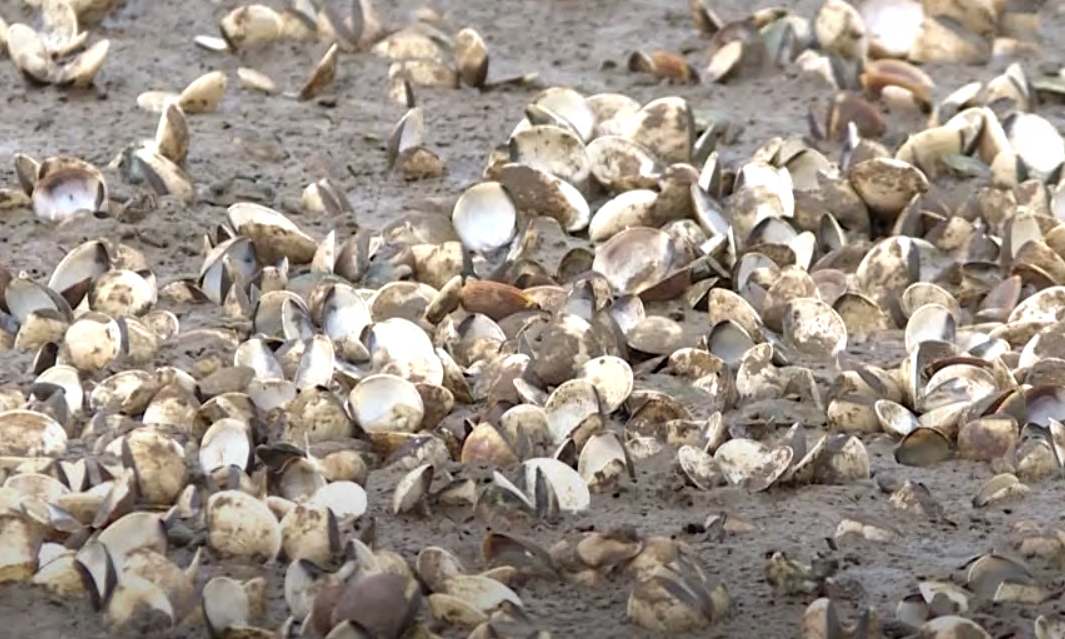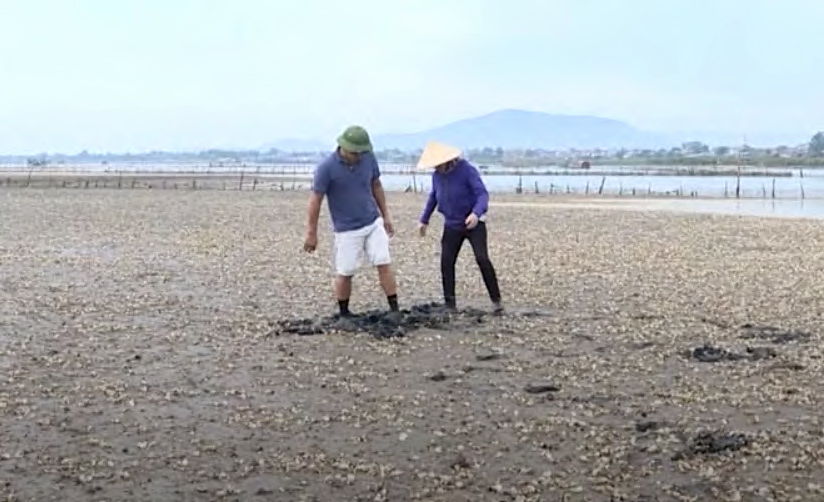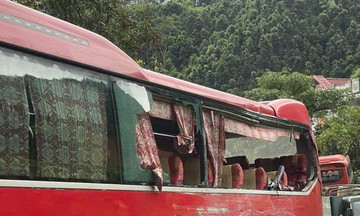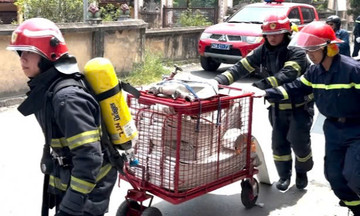On 9/8, clam farmers in Ngoc Son ward hired machinery and workers to collect and dispose of the dead clams. A strong, fishy odor emanated from the decomposing clams along more than two kilometers of coastline under the hot sun.
 |
Piles of dead clams on the beach in Ngoc Son. Photo: Lam Son |
Phan Van Toan, a member of the Hai Chau Aquaculture Cooperative, said the clams began dying in small numbers at the end of July, after Typhoon Wipha, and have continued to die since then. More than two hectares of his family's clam farm, nearly ready for harvest, have been almost completely wiped out.
"The clams died very quickly. Within hours of the first signs, they opened their shells and their insides decomposed. Farmers had no time to react. Many have lost everything," Toan said. The collection and disposal of the dead clams and the restoration of the farming areas are proving difficult due to labor shortages and the time required.
According to the Ngoc Son Ward People's Committee (UBND), the unusual clam die-off began about 10 days ago, affecting more than 50 households across approximately 80 hectares. The mortality rate is 95% or higher across all age groups, with estimated losses of 60 billion VND.
Nguyen Van Dien, an official from the Veterinary Department of the Thanh Hoa Provincial Sub-Department of Animal Husbandry and Veterinary Medicine, said analysis of dead clam samples from Ngoc Son revealed infection with the parasite *Perkinsus olseni*. In addition, Typhoon Wipha caused a large influx of freshwater from the upper reaches of the Yen River, carrying sediment and waste that covered the clam beds, altering the habitat and negatively impacting the clams.
The Thanh Hoa Provincial Sub-Department of Animal Husbandry and Veterinary Medicine is working with local authorities to guide residents on how to handle and collect the dead clams to minimize environmental pollution and quickly restore production.
 |
Residents of Ngoc Son ward inspect the area where clams have died. Photo: Lam Son |
Thanh Hoa province currently has over 1,000 hectares of commercial clam farms, concentrated in the intertidal zones of Van Loc, Tan Tien, and Ngoc Son communes (formerly Nghi Son town, Nga Son district, and Hau Loc district), with an estimated annual output of 19,000 tons.
In addition to Ngoc Son ward, scattered clam deaths are also occurring in other clam farming areas in Thanh Hoa, such as Tien Trang and Quang Nham. The agricultural sector advises farmers to closely monitor weather patterns, especially water sources and temperatures, and to proactively harvest clams upon detecting any unusual signs. They also recommend strengthening connections with buyers to mitigate price risks during disease outbreaks.
Le Hoang












